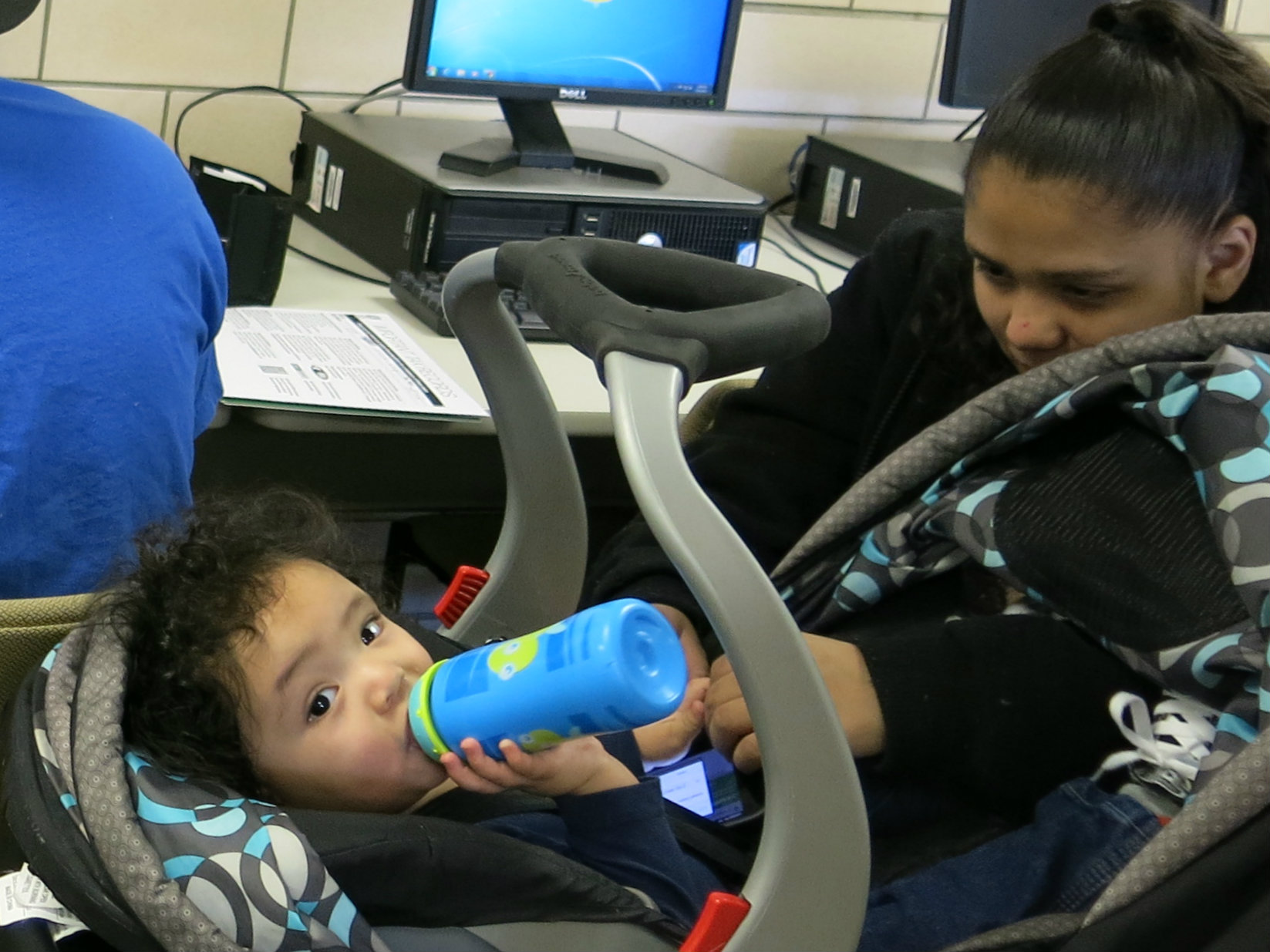
Quick -- name the country’s largest cash assistance programs for poor families.
You probably guessed welfare and food stamps. But there’s a big one that most people overlook: the Earned Income Tax Credit.
In 2013, 358,000 low-income Coloradans claimed the credit, receiving $777 million total. And because the program is designed to primarily benefit families, poor children often benefit.
“You plan for your income tax return when you're a single mom. You plan for that money,” said Sonya, a filer at one of Aurora's free tax preparation site last month. “It's like winning the lottery.”
She reminisced about all the things she’d used that tax refund for over the years: paying off bills, keeping her car running, and taking her kids for a rare night out at Chuck-E-Cheese.
1. Who gets to claim the EITC in Colorado and why
The Earned Income Tax Credit has its roots in a conservative economic proposal from the 1970s, the negative income tax.
The idea, as piloted by Milton Friedman, is that the government should ensure all citizens have enough money to survive on, not through complex welfare programs or a higher minimum wage, but by simply sending them enough money to be self-sufficient.
In the 40 years since President Gerald Ford instituted the first EITC, both Republican and Democratic presidents have embraced and expanded the program.
Below, click to see what percentage of Coloradans claim the credit in each county, as well as the amounts that they receive.
2. Why it works to (unofficially) reduce poverty
Sometimes, in order for a family to rise out of poverty, they just need more money. That’s exactly what the EITC provides.
Official poverty figures exclude whatever government assistance families receive, but the Piton Foundation calculates that if their parent’s EITC checks were factored in, 43,000 fewer Colorado children would be considered poor.
Calculate how much families can receive
In 2012, the most recent year with available data, that would have shaved two points off the state’s child poverty rate, dropping it to 15 percent.
Another way to gauge the EITC’s significance is to break it up hourly. For a single mother with one child, making minimum wage in Colorado, the credit amounts to a $1.59-an-hour raise over the course of the year.
3. What happens to the families who get it
By arriving as a single lump sum, the credit also functions something like an instant savings account for workers living paycheck to paycheck, allowing them to make big purchases they otherwise couldn’t afford.

Mariah Herrera has big plans for her EITC. An assistant manager at a Denver dollar store, Herrera and her 14-month-old son live with her grandparents. She wants to use the $5,000 she’s getting to pay off old bills and improve her credit rating, the first step to bigger changes.
“I want to start looking for a place,” said Herrera, as her son snoozed in his stroller at a free tax preparation site, “get everything together and start a better life for him.”
Research shows that children in families that get larger tax credits are healthier, do better in grade school, and are slightly more likely to go to college.
“The effect on the kids and others who are in the family over the long run is actually pretty extraordinary,” said Rich Jones with the Bell Policy Center, a progressive advocacy group.
4. The high cost of helping people
The EITC has one big and very expensive flaw: Around a quarter of payments go to people who don’t qualify for them.
The IRS estimates incorrect payments cost the government around $14.5 billion a year. A lot of those may be innocent filing errors due to the complexity of claiming the credits. But with so much money available, fraudulent filings are also a concern.
On the other end of the spectrum, the IRS estimates that in 2010, 28 percent of eligible Coloradans missed out on the EITC.
“It's a mess,” said Linda Goram with the Independence Institute, a Denver-based free market think tank. “If you're doing a tax system, you probably should just use it for a tax system and not try to make it an anti-poverty program.”
Before his election to the U.S. Senate last year, Colorado Republican Cory Gardner introduced a bill in the U.S. House that would have increased the penalties for fraudulently claiming an EITC, or helping someone to do so. The legislation never went anywhere, but the IRS continues to push Congress to give it more authority to go after problematic filers.
5. Colorado’s getting in the game
Love it or hate it, Colorado is getting in on the Earned Income Tax Credit concept. The state is poised to start offering an EITC of its own, giving workers up to 10 percent of whatever they get from the federal government.
The state EITC is already on the books, but it won’t go into effect until the Colorado’s TABOR surplus is large enough to cover the cost, an estimated $84 million a year.
Analysts differ on how soon that might happen; economists in the governor’s office estimate those checks could go out as soon as next spring while the Legislature’s number crunchers think it won’t be until 2017.
Once it is active, Colorado will offer the credit permanently, regardless of whether the state is running a TABOR surplus in a given year.
This means Colorado is likely to experience both the good of the EITC – the improved childhood outcomes that higher tax credits brings – and the bad – millions wasted on improper payments – in the coming years.









